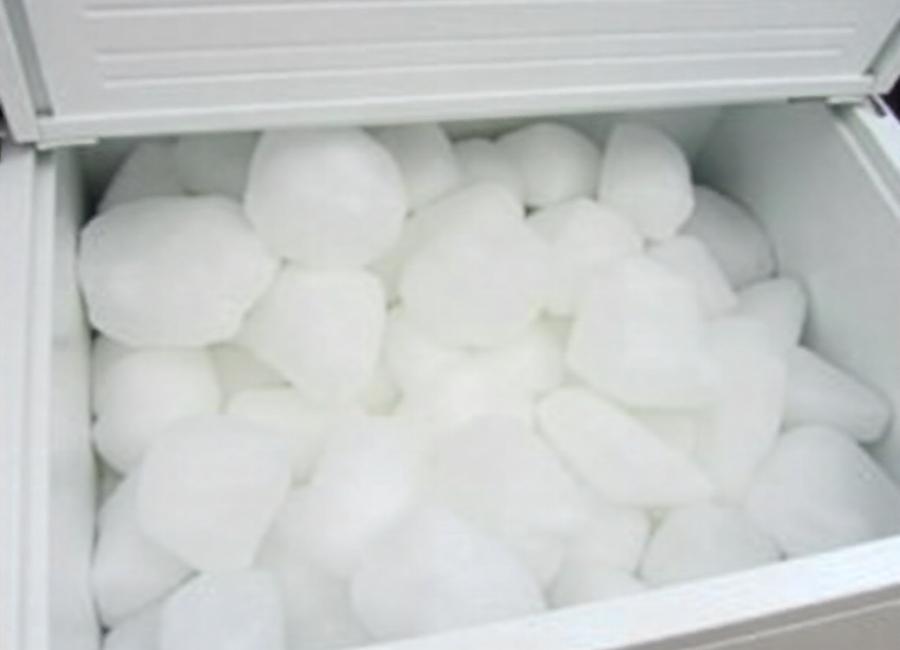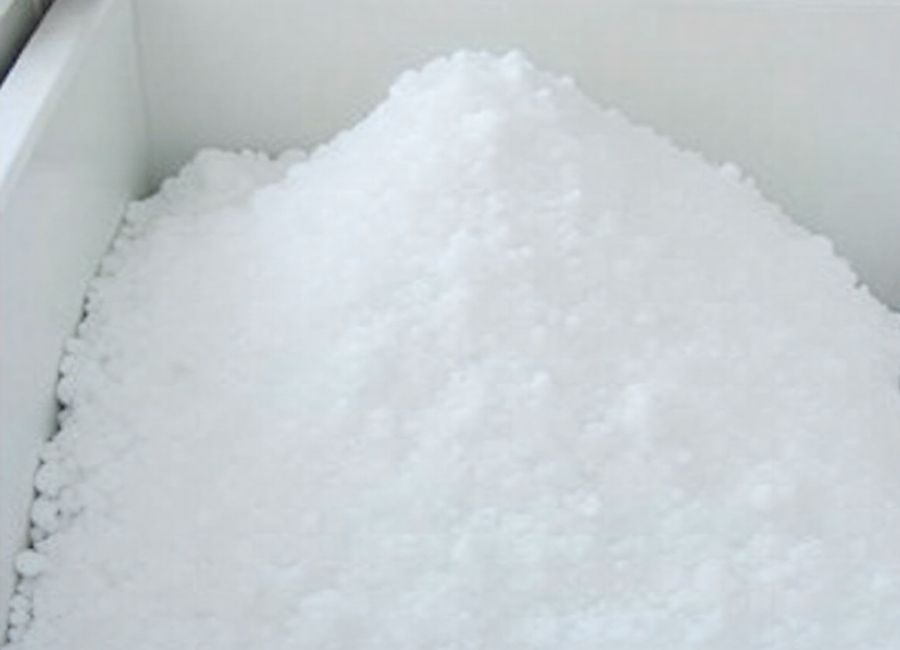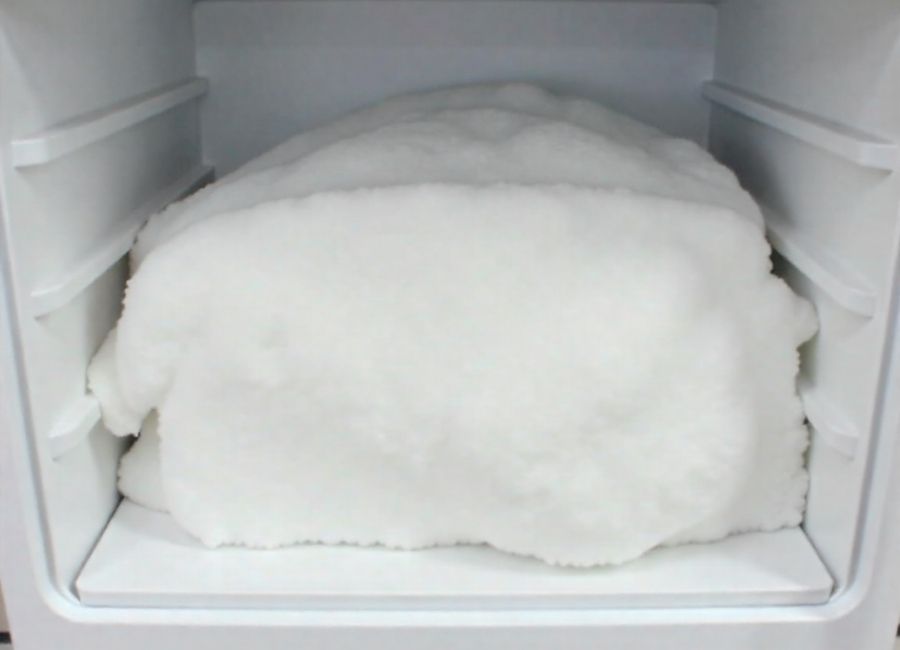Dry ice is great for making spooky fog at parties or keeping food frozen during a power outage. Unlike regular ice, it doesn’t melt but instead turns straight from a solid into carbon dioxide gas. Because of this, storing dry ice is a bit different. Many people wonder if putting dry ice in a freezer will help it last longer.
The short answer is yes, but it’s a bit more complicated. Keeping dry ice in a freezer can slow down how quickly it disappears, but it won’t stop it entirely. In this guide, you’ll learn how long dry ice lasts in a freezer, what affects its lifespan, and the key safety tips for handling it.
What is Dry Ice?
Before we discuss storage, it’s important to understand what dry ice is. Dry ice is the solid form of carbon dioxide (CO2). Its temperature is extremely cold, around -109.3°F (-78.5°C). (Dry Ice | YSU, n.d.) Because it’s so cold, it can cause severe frostbite if it comes into contact with bare skin.
The most notable characteristic of dry ice is that it sublimates. Instead of melting into a liquid like water ice, it transitions directly into a gas. This process releases carbon dioxide, which is why proper ventilation is crucial when handling or storing it.
How Long Will Dry Ice Last in a Freezer?

Putting dry ice in a regular home freezer will help it last longer than if you leave it out at room temperature. Still, your freezer isn’t cold enough to stop it from turning into gas. Most home freezers are set to about 0°F (-18°C), which is much warmer than dry ice. (About Dry Ice, n.d.)
Usually, 10 pounds of dry ice will last somewhere between 24 and 48 hours in a freezer. (Dry Ice Handling, n.d.) The exact time depends on a few different things, which we’ll look at next.
Factors That Affect How Long Dry Ice Lasts
Several variables can influence the sublimation rate of dry ice, even inside a freezer.
- Amount of Dry Ice: Bigger, solid blocks of dry ice last longer than small pieces or pellets. That’s because they have less surface area compared to their size, so they turn into gas more slowly. If you can, choose one big block instead of many small ones.
- Type of Freezer: The kind of freezer you use matters. Chest freezers are usually better for dry ice than upright ones because cold air stays at the bottom and doesn’t escape as easily when you open the lid. (Blog Archives – International Laboratory Freezer Challenge, n.d.) A well-insulated, efficient freezer also keeps its temperature better, which helps dry ice last longer.
- Insulation: Good insulation helps dry ice last longer. Even though your freezer is insulated, you can add more by wrapping the dry ice in newspaper or towels before putting it inside. This extra layer keeps the cold in and slows down how fast it turns into gas.
- How Often the Freezer is Opened: Every time you open the freezer door, warmer air rushes in. This temperature fluctuation will speed up the sublimation process. To maximize the life of your dry ice, keep the freezer closed as much as possible.
Should You Put Dry Ice in a Freezer?

While you can store dry ice in a freezer, there are important considerations and potential risks to be aware of. You can keep dry ice in a freezer, but there are some important things and possible risks to keep in mind. The thermostat in most household freezers is not designed to handle temperatures as low as -109.3°F. It may cause the freezer to run continuously in an attempt to reach its set temperature, potentially damaging the compressor. Furthermore, the intense cold can make the plastic components inside your freezer brittle and cause them to crack. (Carbonic Dry Ice FAQ’s, its uses, costs & applications, n.d.)
Gas Buildup and Ventilation
When dry ice turns into gas, it releases carbon dioxide. (About Dry Ice, n.d.) If you put it in a freezer that doesn’t have good ventilation, the gas can build up. This pressure might push the freezer door open or, in rare cases, cause damage. Make sure your freezer isn’t completely airtight. Most aren’t, but it’s an important safety tip.
Safe Handling and Storage Tips
Safety is the most important thing when working with dry ice. Its very low temperature and the gas it gives off can be dangerous if you don’t handle it properly.
1. Always Wear Protective Gear
Don’t touch dry ice with your bare hands. Always use insulated gloves, such as leather work gloves or oven mitts, to protect your skin from frostbite. It’s also a good idea to wear safety goggles to keep your eyes safe from any small pieces that might break off.
2. Ensure Proper Ventilation
Keep dry ice in a place with good airflow to stop carbon dioxide gas from building up. If you’re moving it in a car, leave a window slightly open. At home, don’t store it in small, closed-off spaces like a pantry or a sealed basement.
3. Use an Insulated Container
The best way to keep dry ice is in a good insulated container, like a Styrofoam cooler. Don’t use an airtight container, because the pressure from the gas can make it burst. If you use a cooler, leave the lid slightly open.
4. How to Dispose of Unused Dry Ice
To get rid of extra dry ice, just leave it in a place with good airflow. Put it on a surface that won’t be harmed by the cold and let it disappear on its own. Keep it away from kids and pets. Don’t throw it in the sink, toilet, or garbage disposal, since it can freeze and break your pipes.
Final Thoughts on Storing Dry Ice
Keeping dry ice in a freezer can make it last up to two days longer, depending on the situation. But it’s important to know about the possible risks to your freezer and your safety. Use good insulation, open the freezer as little as possible, and always wear protective gear to use dry ice safely.
Remember that ventilation is your most important safety consideration. As long as you respect the properties of this unique substance, you can use it effectively for your needs.



















